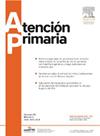Prevalence and factors associated with female genital mutilation among daughters using Somalia Demographic Health Survey Data, SDHS 2020
IF 1.8
4区 医学
Q2 MEDICINE, GENERAL & INTERNAL
引用次数: 0
Abstract
Objective
To determine the prevalence and associated factors of female genital mutilation (FGM) among daughters of women aged 15–49 in Somalia using data from the 2020 Somaliland Demographic and Health Survey (SDHS).
Design
A cross-sectional study utilizing data from the 2020 SDHS.
Setting
Data was collected across Somalia, including urban, rural, and nomadic areas.
Main measurements
FGM prevalence was presented as percentages. Logistic regression analysis was used to identify associated factors, presented as odds ratios with 95% confidence intervals.
Results
The prevalence of FGM among daughters was 24%. Factors significantly associated with FGM included age, region, residence, education, and wealth index. Younger daughters were more likely to be circumcised (p = 0.000, 95% CI: 0.066–0.274). Rural residence increased the likelihood of FGM (OR = 1.436, CI = 1.257–1.64). Primary education increased the odds of FGM (OR = 1.334, CI = 1.127–1.58). Mothers who believed FGM should continue were more likely to have circumcised daughters (OR = 1.464, CI = 1.305–1.642).
Conclusions
FGM prevalence among daughters in Somalia is influenced by age, region, rural residency, and education. The findings highlight the need for targeted educational and intervention programs, particularly in rural areas, to effectively reduce FGM practices.
利用索马里 2020 年人口与健康调查数据,研究切割女性生殖器在女儿中的流行率和相关因素
目标利用 2020 年索马里兰人口与健康调查 (SDHS) 的数据,确定索马里 15-49 岁妇女的女儿中切割女性生殖器官 (FGM) 的流行率和相关因素。采用逻辑回归分析确定相关因素,以几率和 95% 的置信区间表示。结果女性生殖器切割在女儿中的流行率为 24%。与切割女性生殖器官明显相关的因素包括年龄、地区、居住地、教育程度和财富指数。年龄较小的女儿更有可能接受割礼(p = 0.000,95% CI:0.066-0.274)。居住在农村会增加切割女性生殖器的几率(OR = 1.436,CI = 1.257-1.64)。小学文化程度会增加切割女性生殖器的几率(OR = 1.334,CI = 1.127-1.58)。认为女性生殖器切割应继续下去的母亲更有可能为女儿实施割礼(OR = 1.464,CI = 1.305-1.642)。研究结果表明,有必要开展有针对性的教育和干预计划,尤其是在农村地区,以有效减少切割女性生殖器官的做法。
本文章由计算机程序翻译,如有差异,请以英文原文为准。
求助全文
约1分钟内获得全文
求助全文
来源期刊

Atencion Primaria
医学-医学:内科
CiteScore
2.90
自引率
8.00%
发文量
156
审稿时长
33 days
期刊介绍:
Atención Primaria es una revista que publica trabajos de investigación relativos al ámbito de la atención primaria de salud. Desde el punto de vista conceptual, Atención Primaria asume el nuevo modelo de atención primaria de salud, orientado no sólo a la curación de la enfermedad, sino también a su prevención y a la promoción de la salud, tanto en el plano individual como en el de la familia y la comunidad. En estos nuevos aspectos que definen el modelo de atención primaria de salud es en los que se centran los trabajos de investigación que publica Atención Primaria, la primera revista de originales española creada para recoger y difundir la producción científica realizada desde los centros de atención primaria de salud sobre cuestiones como protocolización de la asistencia, programas de prevención, seguimiento y control de pacientes crónicos, organización y gestión de la asistencia primaria, entre otros.
 求助内容:
求助内容: 应助结果提醒方式:
应助结果提醒方式:


